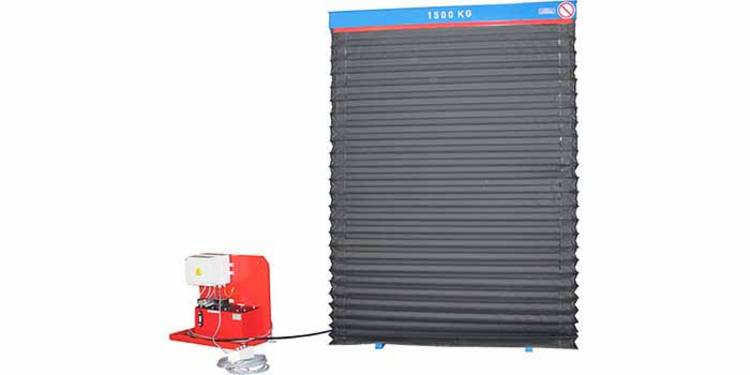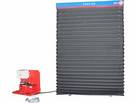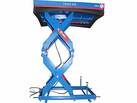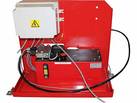This robust double-scissor lift table is used for palletising in 3-shift operation. The use of bearings that can be lubricated ensures that it will continue to operate successfully for many years to come.
Support for the employees
Starting position
We are at the end of a long production process in which bags have to be stacked on industrial pallets. Every bag weighs just under 20 kg. With a stacking height of about two metres, stacking involves considerable physical exertion and an unfavourable body posture.
Disadvantages for employees and employer
Apart from the obvious disadvantages for the employees, the employer also loses with this purely manual method of working. The high level of physical exertion means that employees cannot maintain their productivity throughout the entire working day. In addition, in the long term, an increasing number of sick days due to back problems can be expected.
To avoid such negative effects, it makes sense to use a lifting work table for more ergonomics in the workplace. For example, our customer has decided to build a deeper pit into which our lift table is inserted. This way, the height of the pallet stack can be adjusted to the height of the respective employee and the employee can work at a height that is convenient for him. The strain on the employee is eased and his productivity is maintained in the long term.
Process flow with the lift table
In the starting position, the scissor lift table is at a comfortable work height for the employee and is lowered in cycles during the stacking process. When the desired stacking height is reached, the lift table is moved to floor level, the full pallet is removed and replaced with a new one. The double-scissor lift table is then raised back to its starting position.
The employee controls the lift table. This means that the scissor lift raises and lowers as long as the respective button on the control panel is pressed. On request, we can automate this process with a sensor cycle control. In this case the current height of the pallet stack is measured and the lift table is automatically raised to the desired height.
Installation situation of the lift table
As described above, the double-scissor lift table is placed in a pit. The pit is deeper than the height of the lift table though. There is therefore a risk that a person could fall into the pit. To prevent this, the lift table is fitted with an enclosure on all sides. In addition, a bellows provides reliable protection against unintentional entry into the hazard area.
Drive & speed
The four hydraulic cylinders of this lift table are powered by a 2.2 kW under-oil unit, which provides a volume flow of approximately six litres per minute. This enables a lifting speed of more than fifty millimetres per second.
The drive also has two special features compared to our standard drives.
- Electric motor with insulation for 500 V instead of the usual 400 V.
- Biodegradable hydraulic oil instead of the normal mineral oil.
Robust & easy to maintain
The double-scissor lift table is used behind an automated plant in 3-shift operation. In view of the high stroke cycles and the continuous use, it is essential that greasable bearings are used. This is of course not limited to the floating and fixed bearings, but also includes the scissor and connecting rod bearings of the lift table.
In the basic design of the lift table, attention was also paid to making it maintenance-friendly. For example, an inspection opening is recessed into the platform, which allows a view under the lift table even when it is fully retracted.






